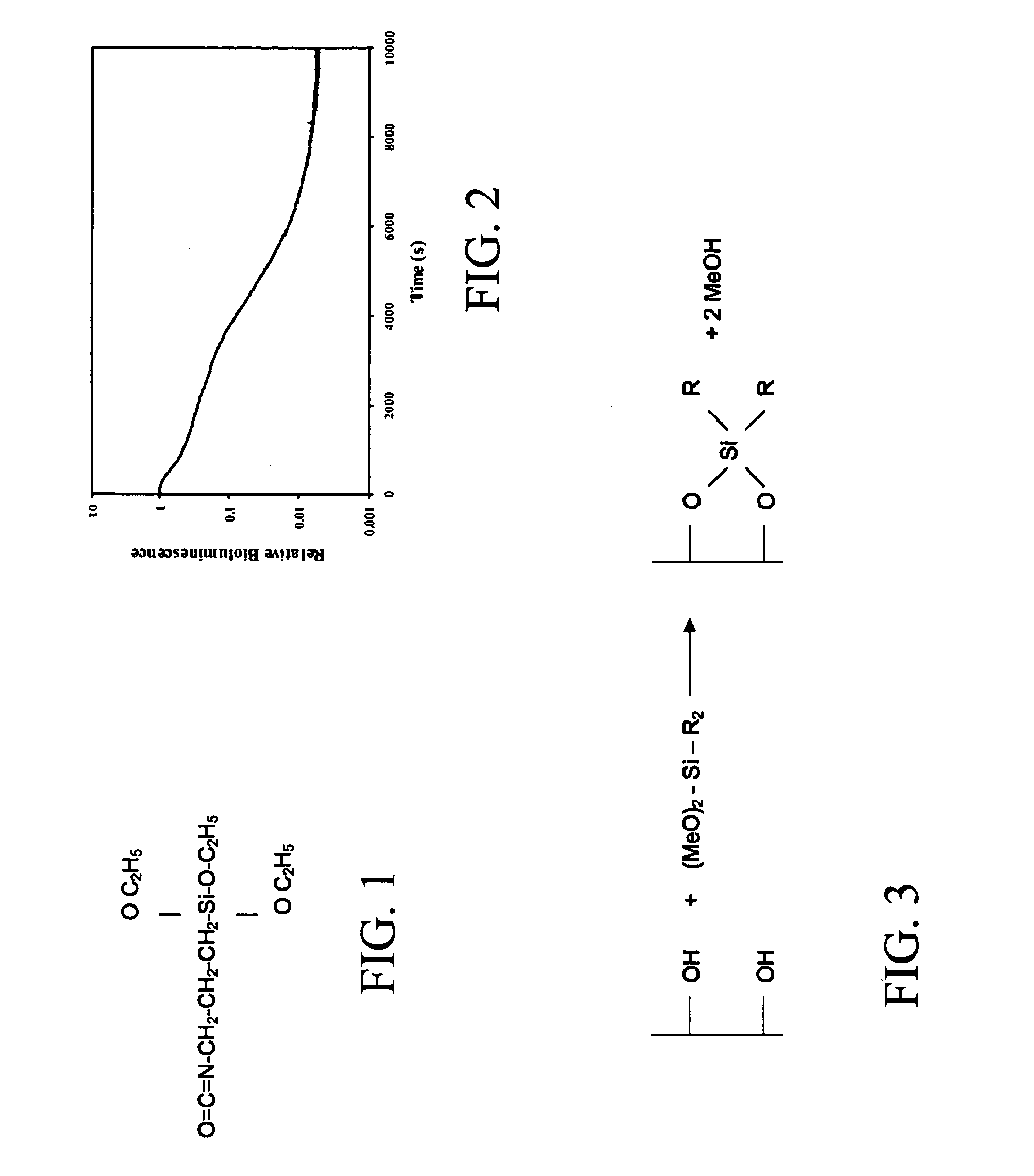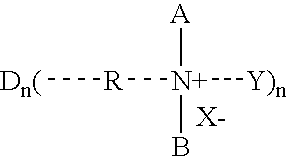Generation of antimicrobial surfaces using dendrimer biocides
a biocide and dendrimer technology, applied in the field of antimicrobial finish, can solve the problems of odor and spoilage, affecting the antimicrobial effect,
- Summary
- Abstract
- Description
- Claims
- Application Information
AI Technical Summary
Problems solved by technology
Method used
Image
Examples
example 1
Coupling to Glass
[0047] Glass microscope slides were treated with the new compounds to verify that the compounds can in fact be coupled to glass surfaces. Silanes were deposited from a dilute solution of alcohol (e.g. 1% of reagent in 50 / 50 water / methanol). A drop of sulfuric acid was added as a catalyst. Hydrolysis occurs, forming a covalent bond between the siloxy group and surface hydroxyl groups, in this case with the elimination of ethanol. Curing of the surface by exposure to heat follows, for example, the treated slides are cured at 80 degrees C. for 24 hours. Successful coupling of the silane resulted in a more hydrophobic surface, causing water to bead up at the surface. The presence of quats at the surface was demonstrated by staining with bromophenol blue solution. Briefly, a 0.02% solution of bromophenol blue in distilled water was prepared and left on the surface of treated and untreated microscopes slides. A few drops of the purple solution was placed on each surface ...
example 2
Coupling to Cotton
[0048] Cotton is a cellulosic fiber. The primary and secondary hydroxyl groups in cotton, as well as the β-glycosidic ether linkages play a significant role in determining the fiber's chemical and physical properties. Several cellulose chains are held together by hydrogen bonds in close alignment to form crystalline microfibrils. The microfibrils in turn align themselves into larger organizational units, or fibrils. These fibrils are usually laid down in a helical fashion. Void and amorphous (unordered) regions exist between crystalline regions. Untreated cotton is thought to be about 70% crystalline. In processing raw cotton into a finished garment, the fiber is subjected to a number of chemical and physical processes. Mercerization of cotton refers to the treatment of cotton with a caustic solution (typically 15-25% sodium hydroxide) to induce a diametric swelling of the fiber, associated with longitudinal shrinkage. If the fabric is held under tension while bei...
PUM
| Property | Measurement | Unit |
|---|---|---|
| diameter | aaaaa | aaaaa |
| degree of crystallinity | aaaaa | aaaaa |
| concentrations | aaaaa | aaaaa |
Abstract
Description
Claims
Application Information
 Login to View More
Login to View More - R&D
- Intellectual Property
- Life Sciences
- Materials
- Tech Scout
- Unparalleled Data Quality
- Higher Quality Content
- 60% Fewer Hallucinations
Browse by: Latest US Patents, China's latest patents, Technical Efficacy Thesaurus, Application Domain, Technology Topic, Popular Technical Reports.
© 2025 PatSnap. All rights reserved.Legal|Privacy policy|Modern Slavery Act Transparency Statement|Sitemap|About US| Contact US: help@patsnap.com



